#domestic guinea fowl
Text
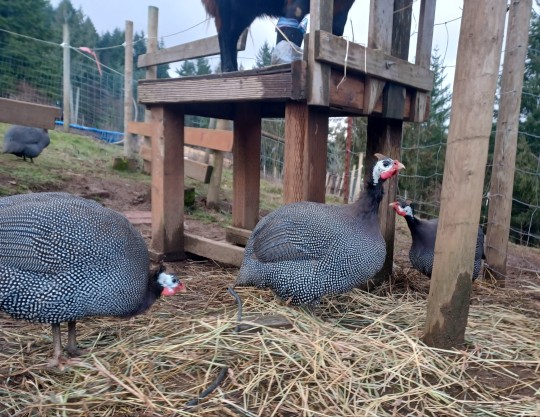

Guinea fowl, the barely domesticated birds of my heart
745 notes
·
View notes
Text

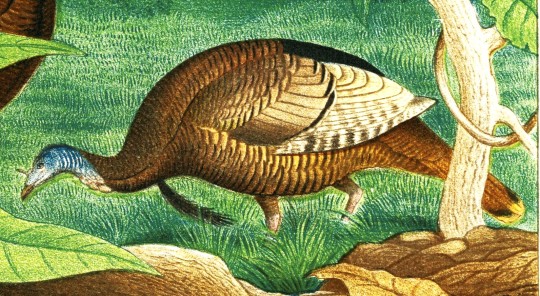
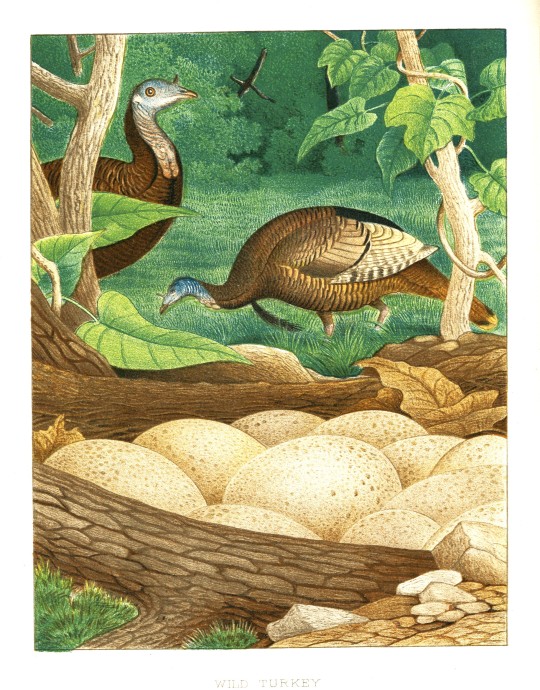
A Thanksgiving Feathursday
These Wild Turkeys (Meleagris gallopavo) and their brood of enormous eggs are from a chromolithograph in Nests and Eggs of Birds of the United States by Thomas G. Gentry and published by J. A. Wagenseller of Philadelphia in 1882, which includes chromolithographs of around 50 paintings of North American birds, eggs, and nests by the American naturalist painter Edwin Sheppard.
Turkey fact: we always thought that the name "Turkey" for both the bird and the country of the same name was just a coincidence. But we learned today that the names are actually related (how did we not know this!). Turns out that indigenous peoples had bred a domesticated form of the Wild Turkey for thousands of years, and the Spanish imported this breed to Eurasia. The breed, or an unrelated species of guinea fowl conflated with the breed, was subsequently introduced to England from the Turkish Middle East, so its name is associated with that connection. Stick that in your oven and roast it!
Happy Thanksgiving, gobble, gobble!

View posts of Thanksgiving Days past.
View more posts from Nests and Eggs.
View more Feathursday posts.
#Feathursday#Thanksgiving#Thanksgiving Day#holidays#Wild Turkey#Turkeys#Nests and Eggs of Birds of the United States#Thomas G. Gentry#Edwin Sheppard#J. A. Wagenseller#chromolithographs#Yay chromoliths!#birds#birbs!
27 notes
·
View notes
Note
Got another bird ask coming your way. Do you think Perlica from Endfield is a Liberi? I see some people draw what I see as feathers in her hair as ears. I personally think she's a pretty safe bet for a Liberi, considering what comes up when you google Perlica (apparently the polish name for guinea fowl).

especially ones with colors like this, for the feathers that is. Numida meleagris, taken from https://hawaiibirdingtrails.hawaii.gov/bird/helmeted-guineafowl-domestic-type/

I haven't really checked that much into Endfield yet because I'm not really interested (and will never be able to play the game with my toaster of a computer)

There's apparently no other meaning to Perlica other than the polish name for the guineafowls, and it wouldn't be surprising for a character to be named after the genus or the name for the animal they're based on (Ptilopsis being the scientist name for northen white faced owl, for example)
But I have to say the plumicorns are weird, it really gives owls vibes (afaik, only Silence, Ptilopsis and Cronin (likely based on an owl) have plumicorns), which, well, only horned owls have plumicorns. And guineafowls do NOT have them. it doesn't ressemble the wing ears like Passenger or Irene have, so it's strange.
But she doesn't show other racial traits, she doesn't seem to have a tail or slit pupils like a Feline, and her plumicorns really do like feathers/fur rather than ears.
As for guineafowl, while I see the name, the ressemblance is... It's far from it. Which I'd find disappointing because I LOVE guineafowls feathers, they're seriously beautiful
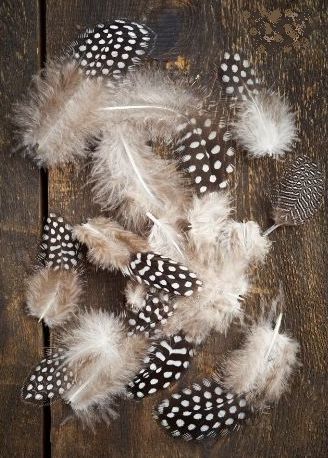
Making a character based on one without those patterns is a waste and I am angry at whoever designed her!! /hj
#arknights#arknights endfield#askiwi#i guess we'll know when the game is out#but honestly my thing is; looks perfectly human? not related to fishes? its a bird
14 notes
·
View notes
Note
please explain to me the guinea fowl at your work
ok so working at a feed store, we're getting baby birds in, and this includes guinea keets. occasionally i get a customer asking about them, what they are, why people keep them, stuff like that
guinea fowl are endemic to africa, though according to my southern homies they can be found roaming free around the southern us! they're not domesticated so they're unfriendly and extremely flighty, and thus don't make very good pets. however a lot of people get them to keep with their chickens because guinea fowl are easily frightened, and literally do not shut the fuck up ever. here's what a guinea sounding the alarm sounds like
youtube
they make wonderful watchdogs because they'll alert you to anything going on with the flock. they're fantastic if you're afraid of a leaf falling to the ground. i've had them before and don't particularly recommend them for anything other than watchdog-ness but they have a charm that's all their own!
3 notes
·
View notes
Text
#1936 - Meleagris gallopavo domesticus - Domestic Turkey
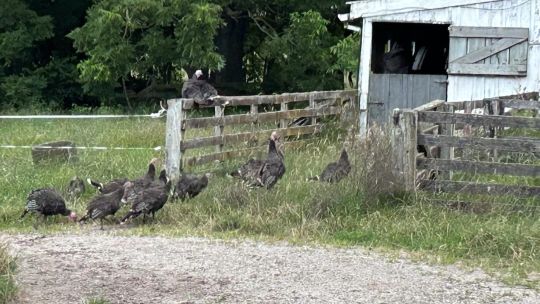
A somewhat unexpected sighting in Cambridge, New Zealand. Free range chickens are one thing, but you don’t often see a rafter of feral turkeys having a stroll down the street here in the Antipodes. Of course the fact that New Zealand has no large predators is probably a factor, and just as well, because unlike their wild counterparts the domestic turkey can’t fly very far. Wild turkeys on the other hand, will roost high in trees to avoid anybody inclined to a white meat diet.
Female domestic turkeys are called hens, and the chicks poults or turkeylings. In North America, male turkeys are called toms; in the United Kingdom and Ireland they are stags. Nobody has recorded what cats and deer call them.
The Latin gallopāvō is a portmanteau meaning "chicken peacock" - which is fair enough. It’s not a bad description of the wild bird. The English-language common name, on the other hand, is the kind of nonsense you get when an entirely unrelated South American bird now known as the Guinea Fowl gets imported into Europe by 15th Century Turkish traders and sold as ‘Turkey-cocks’. When the British invaded Massachusetts, they assumed the local bird was the same one.
Turkeys were first tamed in what is now southern Mexico at least two thousand years ago. Ancient Mesoamericans using their meat and eggs as a major source of protein, and the feathers for decorative purposes. The Aztecs associated the bird with their trickster god Tezcatlipoca. Recent research suggests a possible second domestication event in the North American southwest between 200 BC and AD 500 but, all of the main turkey varieties today are derived from the Mesoamerican domestication.
The domestic turkey now is raised throughout temperate parts of the world, partially because industrialized farming has made the meat very cheap. The great majority of domestic turkeys are bred for white feathers (less visible when the carcass is dressed), although brown or bronze-feathered varieties are also raised. They retain the snoods and wattles - fleshy protuberances atop and below the beak.
There were an estimated 30,000 wild turkeys left in the US by the 1930s, but extensive efforts by wildlife biologists have helped numbers recover, even in states where they had been hunted to extinction. This has led to some aggressive encounters between humans and turkeys that have become used to humans around the place. Even the domestic variety can be quite pushy - my little brother was pursued round and round a truck stop yard when he was a lad, but that may just have been the bird taking offense to his multicoloured jacket. I just found it hilarious.
1 note
·
View note
Photo
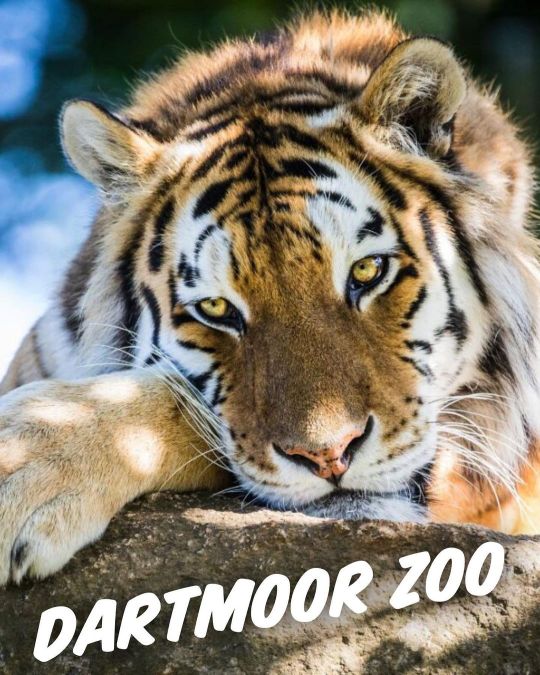
@dartmoorzoo has over 70 different animal species, including some endangered and critically endangered species. The zoo has a breeding programme with common marmosets, tapir, slender-tailed meerkats, Kafue lechwe, and wallaby. They also have Mammals Amur tiger, African lion, Jaguar, Carpathian lynx, Red-handed tamarin, Gelada, Iberian wolves, Asian short-clawed otters, Raccoon, Vervet monkeys, Common marmosets, Ring-tailed coati, Slender-tailed meerkats, tapir, capybara, Kafue lechwe, Grant's zebra, sugar gliders, lesser hedgehog tenrec, Parma wallabies, Bennett's wallabies, Reeves's muntjac, Fallow deer, domestic rabbits, raccoon dogs, reindeer, Azara's agouti, African pygmy goats and Cloud rat. Birds Ostrich, greater rhea, white-cheeked turaco, avocets, Indian runner ducks, Helmeted guinea fowl, white-naped crane, great horned owl, great grey owl, burrowing owl, European eagle owl, striated caracara, Himalayan Monal, and golden pheasant. Reptiles Red-tailed boa constrictor, royal python, corn snake, milk snake, Western hognose snake, blue spiky lizard, blue-tongued skink, bearded dragon, crested gecko, American alligators, electric blue gecko and yellow-headed day gecko. Amphibians African bullfrog, poison dart frog, golden Mantella frog, axolotl. Invertebrates Sun beetle, leaf insects, Mcklay's spectre, giant thorny stick insect, orange-headed cockroaches, Indian ornamental tarantula, Brazilian black tarantula, Chilean rose tarantula, tailless whip scorpion, and tiger land snails. https://www.dartmoorzoo.org.uk/ (at Dartmoor Zoological Park) https://www.instagram.com/p/Cp-9fbvrHJ0/?igshid=NGJjMDIxMWI=
0 notes
Text
Poultry Production Status, Major Constraints’ and Future Prospective
Poultry production is a sector of livestock production to gain meat, egg and other products from domesticated bird species which includes chicken, ostrich, turkey, duck, fowl guinea and others. The poultry production is different from countries to countries due to different situation of regions depend on economic activities, environmental situation and cultural aspects of society and other impacts. With this in mind, the current aimed to review the studies to revise the current status of poultry productions, highlight the constraints in poultry productions, and estimate the future fate of poultry productions. In many societies, poultry plays an important socio-cultural role. Diseases, market problems, feed resources, lack of proper housing, predators, as well as social and cultural constraints are all obstacles to the future growth of the poultry industry. Despite, the presence of large chicken population in Ethiopia, contribution to the national economy or benefit exploited is very limited due to diseases, predators and veterinary services. The main disease affect the chicken in Ethiopia includes viral disease (Newcastle disease), gastrointestinal parasitosis, ectoparasitosis, aspergilosis and different bacterial infection due to lack of biosecurity. In addition predators of chicken imposed on poultry production in Ethiopia are wild mammals locally called ama, cats and birds(vultures). However, the poultry production system has a bright future since different local and international humanitarian organization have recognized that addressing this sector will benefit the poorest and most disadvantaged people in developing nations. With the need for increased animal protein sources in the world, there is general agreement that these areas are going to witness further expansion in the current decades. Therefore, it is recommended to increase productivity through improvements in health, good management and control of predators should be encouraged.
Journal of World’s Poultry Science, Rovedar Publication
0 notes
Text
In every chicken group, people talk about how "wild chickens did just fine without..." but there are no wild chickens. There are jungle fowl and guinea hens, which are closely related, but chickens are purely a domesticated thing. And if you want to say "wild chickens did just fine without heat in winter" those wild ancestors are equatorial, so not a great argument.
Which isn't to say that all chickens need heat in winter! But the reason they don't is actually because they've been domesticated for hardiness. It's because they're less wild. And because of how domestication works, that also depends on where they were domesticated, so a breed domesticated in Southeast Asia is probably going to need heat in the winter in the Midwest US, but one domesticated in Iceland won't.
1 note
·
View note
Text
Global Wild Bird Products Market Report | Global Forecast From 2022 To 2028
Global Wild Bird Products Market was valued at USD 5.02 Billion in 2021 and is expected to reach USD 6.42 Billion by the year 2028, at a CAGR of 3.58%.
All non-domestic birds are considered (chickens, ducks, geese, guinea fowl, peacocks and turkeys), members of the Psittacidae family (parrots and parakeets) and other foreign cage birds such as common canaries, exotic finches and ringed pigeons. birds. wild. Both native and imported foreign game birds, such as grouse, partridge, pheasant, quail, and duck, are classified as "wild birds" in West Virginia. Pet owners love their birds, but more and more people are falling in love with the birds that live outside. More people are feeding and caring for wild birds in their neighborhoods. Because wild birds are self-sufficient, there is a significant difference between caring for domestic birds and wild birds.
Here are some of the key market trends that Packaged Facts investigates in Wild Bird Products – Pet Market Trends and Opportunities. The report provides an in-depth analysis of the sale of products and feeds designed for all wild bird species through all channels of the US market, focusing on the key segments driving the market and highlighting sales trends. The report covers sales of commercially packaged seeds, nuts and seed mixes, tallow and nectar, and non-food products such as feeders, houses, and baths, and analyzes the top sellers in each segment.
Read More:
#Wild Bird Products Market#Global bird products Market Size#Wild Bird Products Market Share#Wild Bird Products Market Growth#Wild Bird Products Market Trend
0 notes
Link
#guineafowl#poultry#poultrybreeds#poultryfarming#poultryfarmingbusiness#poultryraising#poultryrearing
0 notes
Text
the bus was passing a feed store that was selling a number of different fowl chick (chicken, turkey, goose, guinea hen) and this lady proclaims ‘That should be illegal!’
I ask he what she means and she elaborates: ‘well chickens are alright but I don’t know about turkeys, shouldn’t they be in the forest?’ ...and when I told here they would be domesticated she grumbled: ‘Well I didn’t go to school for that’ before getting off the bus
Honestly I should’ve told her people can keep peacocks, really blow her mind
0 notes
Note
Ditch the ducks and get some goozes?
I love my ducks too much to ditch them, but I am quite tempted to get geese! If I had more money (and if my parents would let me lol) I'd love to try keeping at least a few of each domestic bird species. My only reservation about geese is that they sound like they're louder and meaner than ducks in addition to being bigger, and my mom is very sceptical of the ducks as it is.
#pigeons and quail are at the top of my bird list#closely followed by peacocks#then turkeys#then geese#then guinea fowl#and then idk maybe pheasants?#not sure if they are considered domesticated#oh doves also#id just like an entire aviary of domestic birds#birds#birdblr#anon#anonymous friend#ask#ducks#geese#duckblr#gooseblr#poultry
1 note
·
View note
Photo
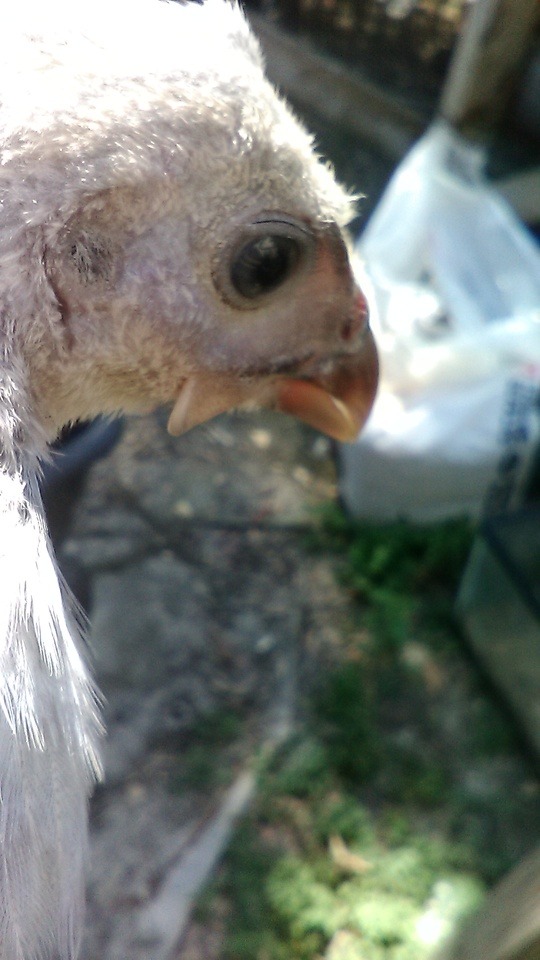

Simba the Lavender Guinea keet is getting his crest and wattles!
18 notes
·
View notes
Text
another thing about today i forgot to mention, i accompanied my dad to help w his bird survey job and we went to some sea cliffs. on top of the cliffs i found a fucking. guinea fowl feather. i want to emphasize the location here. on a cliff. by the ocean. there are houses somewhat nearby, at least one of which keeps chickens, but i have not heard of anyone nearby keeping guinea fowl. maybe they do but its so fucking weird to find a feather from a fucking guinea fowl. on a sea cliff
the options are: 1) it blew there on the wind and 2) some predator, like a fox or bird of prey, took the bird nearby to eat. both imply a guinea fowl living nearby. i didnt see any other feathers from it (which would likely be there if something ate it)
#starry static#guinea fowl feathers are like grey / black w white polkadots#so you can imagine my confusion when i found it!!#imagine me absolutely wracking my brains on a sea cliff trying to identify this weird fucking feather#anyways i have a guinea fowl feather now so neat#its a helmeted guinea fowl ig bc theyre domesticated
0 notes
Note
hi! could you do diana? and if you can, could you please tell me how to start worshipping, i'm a new witch and im really lost
Offerings and ways of Worshipping Lady Diana
(In mt experience the best way to begin worshipping a deity is to first establish communication, this can be through throwing together a quick pendulum board and using a paper clip on a bit of string or using a tarot app (I recommend golden thread tarot) if you don't own a deck of your own. Establishing contact is an important first step, it can tell you why the deity is there and give you an insight into what they may be seeking from you in return. (I suggest biddy tarot for card meanings. Next what you'll wanna do is create a devotional space for them, this can be anywhere, outside, a desk, a bedside table, in a small box, wherever you can fit one. This space will be where you put offerings, candles and incense. (Of its in a box use electric candles or remove the candle from the box when you light it. Once you've made an offering commune with them Once more, see if they liked it (I do this through pyromancy but other divination works just as well), find out your deities sacred day(s), or honestly whenever you have free time and use that time to set offerings (I do mine weekly or whenever feels necessary.) Proceed as feels correct (or ask for help from fellow practitioners)
Incorporate elements of worship for Latona and Apollo into your practice with Lady Diana, in ancient Rome she was most commonly worshipped alongside her brother and mother
Aid pregnant people and animals however you can
Study midwifery
If you hunt, do so ethically
Diana is the goddess of the wild, children, providence, abundance, harvest woodlands, the hunt, fertility and domestic animals, and in Italy, the sun but she became associated with the Moon when people equated her with Artemis (and later, Selene, Luna and Hekate) so anything moon shaped would be an acceptable offering for her
Moon cakes
Sun or moon water
Items found in the forest, this can be leaves, flowers, sticks, rocks or even interesting trinkets you may find
Leave (decomposable) offerings by a lake or body of water
Bow and arrow imagery
Practice archery or knife throwing
Arrowheads
Things in threes (Diana was sometimes called Threefold Diana Trivia, this was one of her earliest Epithet)
Learn about her epithets, such as Trivia, Diana Lucifera, Diana Triformis, Diana Tifatina and Diana Nemorensis
associated scents for candles and incense: jasmine, frankincense, lemon, aloe, ginseng, verbena, camphor, rose and sandalwood
associated plants: apple, rue, balm, beech, vervain, jasmine, mugwort, lavender, walnuts, willow, Oak, aloe, cedar, tarragon, wormwood, lemon, anemones, flowering almond, Hazel, ranunculus, honeysuckle, passionflower, thistle, laurel, fir tree
associated gems and metals: amethyst, emerald, moonstone, pearl, quartz, crystal, silver, turquoise, iron, aluminium, moss agate and diamond
Associated animals: Dogs, deer, goats!, guinea fowl, horses, bear, dove, and bees
Dog teeth (ethically sourced)
Dog fur (ethically sourced)
Honey
Deer antler (ethically sourced)
Goat horns (ethically sourced)
Candles of silver, white, red, purple, green and turquoise
Celebrate August 13th (Diana was worshiped at a festival called Nemoralia, or the Festival of Torches, beginning on August 13 each year. After washing their hair and dressing it with flowers, Diana’s followers would proceed around the sacred Lake Nemi) and 15th (her feast day, now the Catholic day of Mary's assumption into heaven)
A statue of her! Or her two dogs
Just spend time outside under the sky (Diana's name derives from the word sky/daybreak)
Fresh fruit (particularly apples)
A mirror or mirrors on her altar or shrine
Bread
Clay figurines
Foster dogs
Feed stray dogs
Leave dog biscuits and meat offerings for her hounds
You can also refer to my posts or other sources about the worship of Lady Artemis from the Greek Pantheon if you need more inspiration for worship and offering ideas but keep in mind they are different deities

#pagan#paganism#omnist#omnism#deity#deity worship#paganblr#witch#witch community#witch blog#witchblr#diana#diana deity#roman deities#roman mythology#deity devotion#deity work
145 notes
·
View notes
Text
Table of Were-Creatures
“Even one who is pure in heart / and says their prayers by night / may become a ___ when the night-flower blooms
and the silver moon is bright.”
I’m not sure if I recommend using this with the Table of Races from a previous post (https://randomencounters.tumblr.com/post/631073167702687744/okay-fine-a-d100-table-of-races). I was trying this table out and, sure, a Drow Were-Styracosaur, a Succubus that turns into a Hyena when the moon is full, sure, but I’m not sure even I could handle a Mi-Go Were-Baleen-Whale.
Wolf
Bear (type appropriate to character’s native land)
Boar
Jackal
Hyena
Bat
Wild dudes with horns and hooves (d8: Deer, Moose, Ibex, Antelope, Gazelle, Fanged Muntjac, Saiga Antelope, Mountain Goat)
Big Cat (d4: Lion, Tiger, Panther, Jaguar)
Housecat
Domesticated Dog (d20: Chihuahua, Tibetan Mastiff, Great Dane, French Bulldog, Pug, Italian Greyhound, Golden Retriever, Black Lab, Basset Hound, Shih Tzu, Pit Bull, Husky, Beagle, Bichon Frise, Yorkshire Terrier, Corgi, Pomeranian, Boston Terrier, Cavalier King Charles Spaniel, Schnauzer)
Rodent (d10: Field Mouse, Rat, Naked Mole Rat, Guinea Pig, Jerboa, Squirrel, Sugar-Glider, Chipmunk, Capybara, Anti-Magic Field Mouse)
Beaver
Skunk
Possum
Fox
Hedgehog
Star-Nosed Mole
Ferret
Otter
Snake (d6: Cobra, Rattle, Ball Python, Puff Adder, Gliding, Winged, Hoop)
Frilled Lizard
Snapping Turtle
Horned Lizard
Suchian (d4: Alligator, Crocodile, Gharial, Caiman)
Plesiosaur
Deinonychus
Herbivorous Dinosaur (d4: Stegosaur, Styracosaur, Brachiosaur, Ankylosaur)
Pterodactyl
Amphibian (d8: Bullfrog, Tropical Poison Frog, Spring Peeper, Surinam Toad, Chinese Mustache Toad, Axolotl, Salamander, one of those weird extinct hammerhead dudes)
Cow
Giraffe
Goat
Sheep
Horse
Llama or Alpaca
Armadillo
Sloth
Kangaroo
Platypus
Koala
Panda
Anteater
Aye-Aye
Ape (d4: Gorilla, Chimpanzee, Orangutan, Proboscis)
Elephant
Rhinoceros
Hippo
Tapir
Fowl (d4: Chicken, Duck, Goose, Peacock)
Wild bird (d10: Crow, Woodpecker, Hummingbird, Eagle, Hawk, Pelican, Vulture, Owl, Penguin, Dodo)
Freshwater Fish (d6 Catfish, Salmon, Sturgeon, Gar, Fancy Koi, Fur-Bearing Trout)
Saltwater Fish (d20: Lionfish, Puffer, Stingray, Remora, Swordfish, Coelacanth, Anglerfish, Stoplight Loosejaw, Gulper Eel, Blobfish, Hagfish, Mola-Mola, Electric Eel, Sarcastic Fringehead, Hammerhead Shark, Sawfish, Megamouth Shark, Goblin Shark, Wobbegong, Great White Shark)
Cetacean (d6: Orca, Walrus, Baleen Whale, Dolphin, Barking Seal, Narwhal)
Marine Mollusk (d10: Dumbo Octopus, Blue Ring Octopus, Mimic Octopus, Humboldt Squid, Vampire Squid, Magnapinna Squid, Colossal Squid, Cuttlefish, Clam/Oyster/Mussel, Spiny Conch)
Crustacean (d6: Blue Crab, Snow Crab, Hermit Crab, Lobster, Mantis Shrimp, Pillbug)
Other marine invertebrate (d10: Starfish, Jellyfish, Sea Urchin, Sea Cucumber, Bobbit Worm, Anemone, Anomalocaris, Opabinia, Barnacle, Glaucus)
Arachnid (d8: Tarantula, Spiny Orb Weaver, Cartwheel, Black Widow, Regular Scorpion, Vinegaroon, Tick, Horseshoe Crabs which are apparently Arachnids)
Centipede
Insect (d10: Stag Beetle, Mayfly, Stick Bug, Wasp, Moth, Camel Cricket, Junebug, Earwig, Bullet Ant, Orchid Mantis)
Snail (d10: 1-6 garden, 7-9 venomous, 10 Flail)
Ooze (d4: Banana Slug, Gelatinous Cube, Green Slime, Black Pudding)
Lurker or Trapper
Roper or Darkmantle
Bag of Devouring
Rust Monster
Owlbear
Dragonet (roll d10: Red, Green, White, Black, Blue, Gold, Silver, Brass, Bronze, Copper)
Duckbunny
Bullette
Flumph
Mimic
Displacer-Beast
Blink Dog
Elemental/Paraelemental (d8: Fire, Water, Air, Earth, Lava, Ice, Lightning, Void)
Wyvern
Bonnacon
Basilisk/Cockatrice
Pegasus
Unicorn
Phoenix
Mongolian Death Worm
Fresno Nightcrawler
Cryptoleporidae (d4: Jackalope, Skvader, Rasselbock, Wolpertinger)
Elwetrisch
Dungavenhooter
Squonk
Sidehill Gouger (aka Prock, Hunkus, Gyascutus)
Avalerion
Rhinogradentia
Fiji Mermaid
Pokemon of choice
Pixie
Giant
Worm-on-a-string
Venus Fly Trap
Car
Chimaera (traditional Lion-Goat-Snake)
Chimaera (reroll this table three times for the three animals to combine)
Randomitemdrop.tumblr.com/random
Randomencounters.tumblr.com/random
271 notes
·
View notes